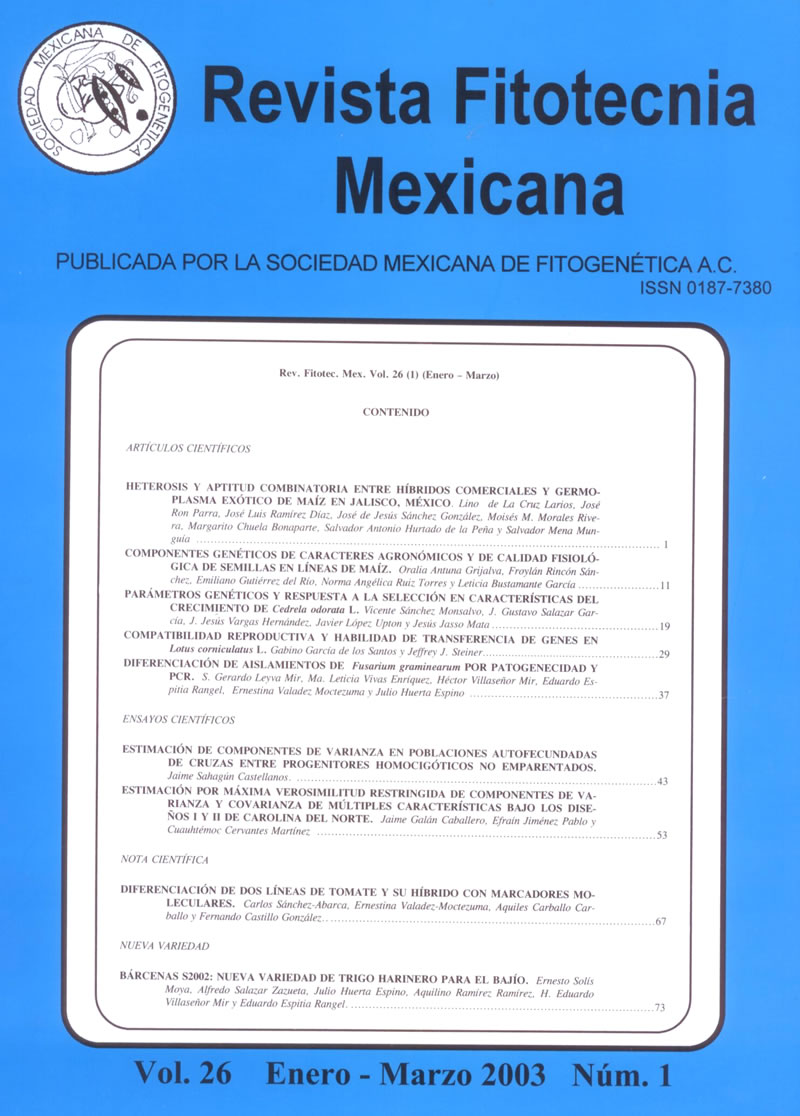DIFERENTIATION OF ISOLATES DE Fusarium graminearum BY PATHOGENICITY AND PCR
Main Article Content
Abstract
To differentiate wheat (Triticum aestivum L.) strains regarding the pathogen producing the fusarium head scab (Fusarium graminearum Shw. Petch), according to the pathogenic level and to DNA markers, we evaluated 10 strains of F. graminearum collected in the States of México, Michoacán, Jalisco, Tlaxcala and Puebla, from spikes of six different genotypes: three considered as tolerant (Buc/Alucan, Chil/Chum 18 and Milán) and three susceptibles (Gálvez, Pavón y Zacatecas). Spike inoculation was carried out with single conidia isolates under greenhouse conditions. There were significant differences among isolates based upon spike pathogenicity. The isolate from Juchitepec, México was the most severe, and the one from Tepatitlán, Jalisco was the less pathogenic. Genotypes Buc/Alucan, Chil/Chum 18 and Milán did not behave as resistant, as it was expected. The DNA analyses among isolates were made by the RAPD-PCR techinque based on a 0.82 genetic similar coefficient. Five different groups were detected among isolates, which were not related to their pathogenicity in field conditions.

